Arboreto Hongneung (홍릉수목원)
8.1Km 2021-03-04
Hoegi-ro 57, Dongdaemun-gu, Seúl
+82-2-961-2522
Es el primer arboreto del país, que se estableció en el año 1922, cuando se instauró el proyecto forestal de Hongneung en Seúl. En este mismo arboreto se encontraba la tumba “Hongneung” de la reina Myeongseong Hwanghu (1897), la esposa del rey Gojong, de la dinastía Joseon. En la actualidad solo ha quedado una señal, porque fue trasladada a otro lugar.
Al ser el arboreto que pertenece al Instituto de Investigación Forestal de Corea, investiga y administra sistemáticamente las especies de plantas nacionales y extranjeras, realiza actividades académicas para el desarrollo del sector, y es un bosque de investigación que se esfuerza en suministrar los recursos genéticos de las plantas. Los domingos abre al público en general, y en los días de entre semana recibe a grupos de estudiantes, para que sea una actividad académica del medio ambiente y de la naturaleza, ofreciendo así la oportunidad de reflexionar y experimentar el valor del bosque.
Universidad Femenina de Ewha (이화여자대학교)
8.1Km 2023-07-03
Ewhayeodae-gil 52, Seodaemun-gu, Seúl.
Hanok Guesthouse Dongchonchae [Korea Quality] / 한옥 게스트하우스 동촌재 [한국관광 품질인증/Korea Quality]
8.1Km 2021-03-26
21-10, Jahamun-ro 11-gil, Jongno-gu, Seoul
Built in 1939, Dongchonchae was designated as Seoul Well Hanok by the Seoul Metropolitan City in 2016. In 2020, this hanok (traditional Korean house) received the Certificate of KOREA QUALITY from the Korea Tourism Organization in the Heritage Hanok field in recognition of its historicity and quality of services. Dongchonjae is located in the western side of Gyeongbokgung Palace, at Seochon. When one passes through its main gate, one sees the yard, with anchae (women's quarters), sarangchae (men's quarters), and byeolchae (detached quarters) surrounding the plot. Anchae has four rooms, daecheong (wood-floored main hall), a kitchen, and a restroom. One of the rooms is used for tea ceremonies as well. Outside of the sarangchae and byeolchae, which are the living spaces for the owners, visitors have free access to the numaru (raised open floor) and the yard. The anchae’s rooms “Bom” and “Yeoreum” can accommodate 2 to 3 adults each, while the rooms “Gaeul” (Tea Room) and “Gyeoul” are optimal for two. The building is rented out as a whole, so no more than one group may stay in the building at any given time. Standard occupancy is four persons, and eight is the maximum number. There are two restrooms, one within the anchae building, one out in the backyard.
Cooking is not allowed in the kitchen, but guests are free to bring in outside food. Experience programs on offer include nighttime exploration of Seoul City Wall, tea ceremony, folk songs, and rice cake making. Additional payment is only required for rice cake making. Guests may choose between two types of complimentary breakfast: Korean, which comes with rice, soup, and three side dishes; and Western, which comes with bread, salad, and coffee. There are a 100-in screen and mini projector for film watching in the yard or daecheong. Towels, toiletries, hair dryer, bottled water, traditional tea, and capsule coffee are included. The kitchen is equipped with kitchen utensils, a microwave, and a coffee pot, enough for instant foods. Guests also have access to refrigerator and washing machine
Fortaleza Achasanseong (아차산성)
8.1Km 2023-04-05
Gwangjang-dong, Gwangjin-gu, Seúl.
La Fortaleza Achasanseong se yergue frente al río Hangang. Ubicada a 200 metros sobre el nivel del mar, mira hacia el sudeste. Se la conoce incluso con los nombres de Janghanseong o Gwangjangseong.
Seoureseo Duljjaero Jalhaneunjip (The Second Best in Seoul) (서울서둘째로잘하는집)
8.2Km 2021-04-06
122-1, Samcheong-ro, Jongno-gu, Seoul
+82-2-734-5302
The delicious, sweet, red-bean soup called “Danpatjuk” in Korean and served at “The Second Best in Seoul” has been an all-time favorite since it opened in 1976. Not only the exterior, but the interior as well, is very simple and modest, similar to a teahouse in the '70s. This does not keep people from coming back because the unforgettable taste of the sweet red-bean soup makes them return again and again.
“The Second Best in Seoul” was originally opened as a teahouse for traditional Korean medicinal tea; sweet red-bean soup being one of the main specialties on their menu list. But, nowadays, sweet red-bean soup has become the most popular menu item. Sweet red-bean soup can be enjoyed as a light meal because it fills you up quickly. In addition, the chestnuts, gingko nuts, red beans, and glutinous rice cake that are in the thick red-bean soup provide good nutrition.
TIP: The name is very special, right? “The Second Best in Seoul” was named by their modest mind of making food with utmost sincerity.
Chowoo Maeul (초우마을)
8.2Km 2019-01-29
8, Hoegi-ro 28-gil, Dongdaemun-gu, Seoul
82-2-957-2266
Chowoo Maeul, located at Hwigyeong-dong Intersection, specializes in fresh beef, serving top-quality top sirloin and boneless short ribs. It has banquet rooms for group dining.
Reserva Ecológica de las Tumbas Heoninneung (Bosque de Alisos) (헌인릉 생태경관보전지역(오리나무림))
8.2Km 2021-03-23
Heoninneung-gil 34, Seocho-gu, Seúl.
+82-2-445-0347
Las tumbas del rey Taejong y su esposa se llaman Heonneung, y la tumba Inneung es del rey Sunjo y su esposa. Por debajo de estas tumbas hay un bosque de alisis con una superficie de 56.200 metros cuadrados, que fue registrado por el Ayuntamiento de Seúl como Reserva Ecológica.
Festival de la Cultura de Hanseong Baekje (한성백제문화제)
8.2Km 2024-08-19
Olympic-ro 424, Songpa-gu, Seúl
02-2147-2800
El Festival de la Cultura de Hanseong Baekje se celebra en la Plaza de la Paz en el Parque Olímpico de Seúl. Este festival es considerado uno de los principales en cuanto a tradición y cultura, recordando los aproximadamente 500 años de historia de Hanseong Baekje. Este período se extendió del año 18 a.C. al 275 de Baekje (uno de los Tres Reinos de Corea, junto con Goguryeo y Silla) antes de que la capital se moviese a Ungjin (actual Gongju) en el año 475. El festival está acompañado de varias actuaciones folclóricas, musicales, conciertos, comida y un concurso de fotografía. A la Plaza de la Paz del Parque Olímpico, lugar donde se realiza el festival, se puede acceder desde la Estación Mongchontoseong de la línea 8 del metro de Seúl (salida 1, a 200 metros de la estación, entre 7 y 10 minutos andando).
Tumbas Reales Heolleung e Illeung en Seúl (서울 헌릉과 인릉) [Patrimonio Cultural de la Humanidad de la Unesco]
8.2Km 2021-03-25
Heonilleung-gil 36-10, Seocho-gu, Seúl.
El monte Daemosan detrás de la Tumba Real Heonilleung era llamado originalmente ‘Halmisan’ (que significa "abuela" en coreano), porque su forma recuerda a una mujer anciana. La Tumba Real Heonilleung alberga los túmulos de dos reyes de la dinastía Joseon (1392-1910): Taejong (1401-1418) y Sunjo (1800-1834). Heonilleung cuenta con numerosas estatuas de piedra y restos arqueológicos, siendo un buen lugar para experimentar la cultura de la dinastía Joseon. Al acercarse a los túmulos, aparece una puerta con el símbolo del taegeuk (yin-yang), marcando el límite entre este mundo y el más allá. Al atravesar la puerta roja, se llega a una construcción en la que se oficiaban antiguos rituales funerarios. Tras esta construcción, se encuentra la tumba real. Alrededor de este lugar se encuentran esculturas de animales llamadas japsang, usadas para alejar los malos espíritus. También hay una estatua de un militar ofreciendo su espada, con su caballo tras él.
Bungmakgol (북막골)
8.2Km 2021-03-24
124-6, Samcheong-ro, Jongno-gu, Seoul
+82-2-730-0980
This is where you can enjoy Bossam (Korean boiled pork with cabbage or lettuce wraps) with roasted garlic. This restaurant's signature menu is napa wraps with pork. This Korean dishes restaurant is located in Jongno-gu, Seoul.
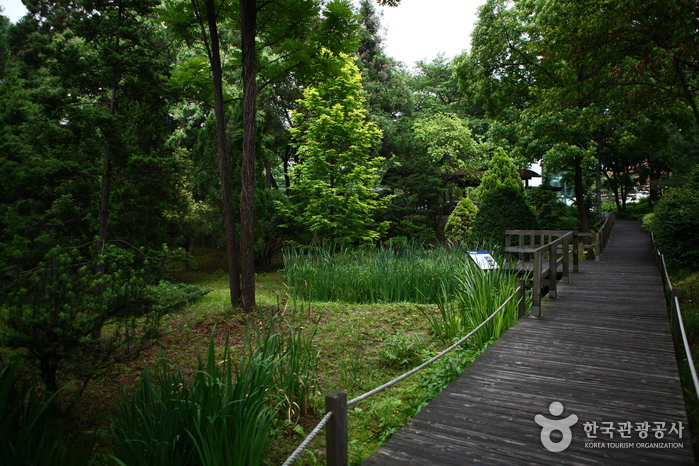

![Hanok Guesthouse Dongchonchae [Korea Quality] / 한옥 게스트하우스 동촌재 [한국관광 품질인증/Korea Quality]](http://tong.visitkorea.or.kr/cms/resource/96/2705896_image2_1.jpg)
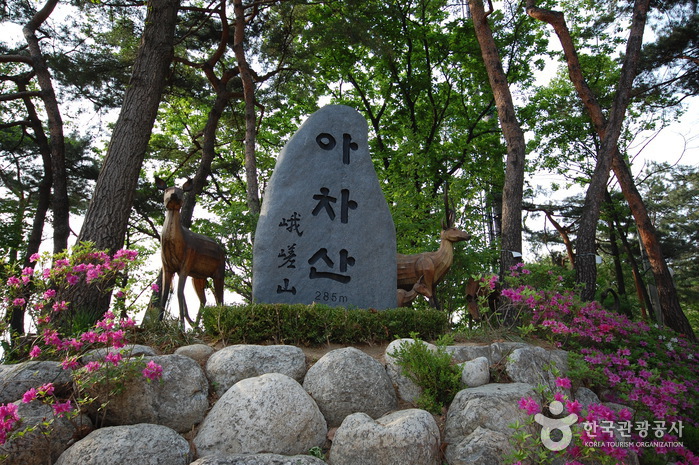
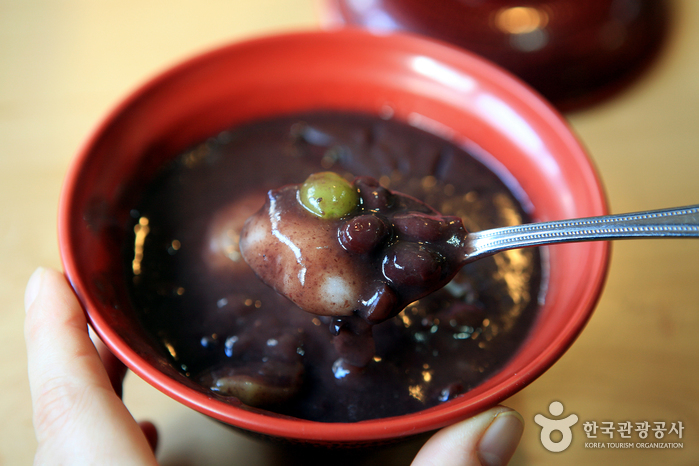
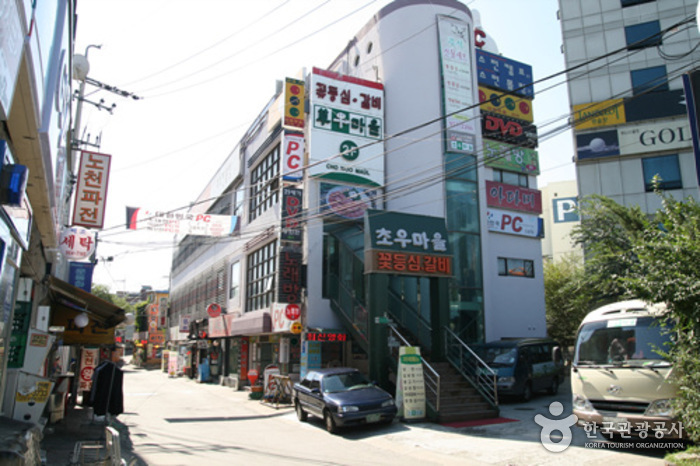
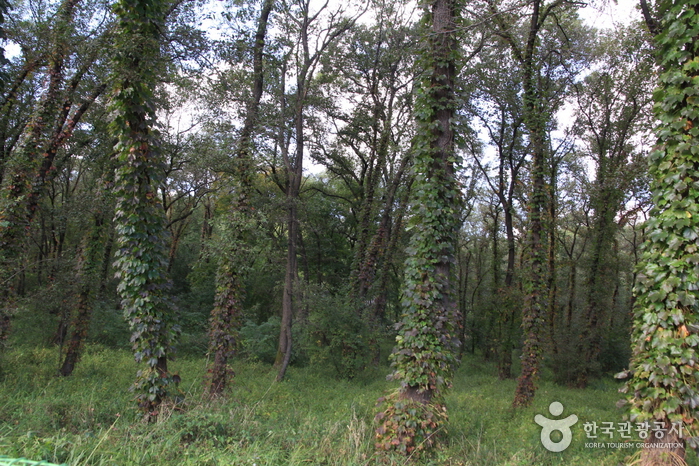
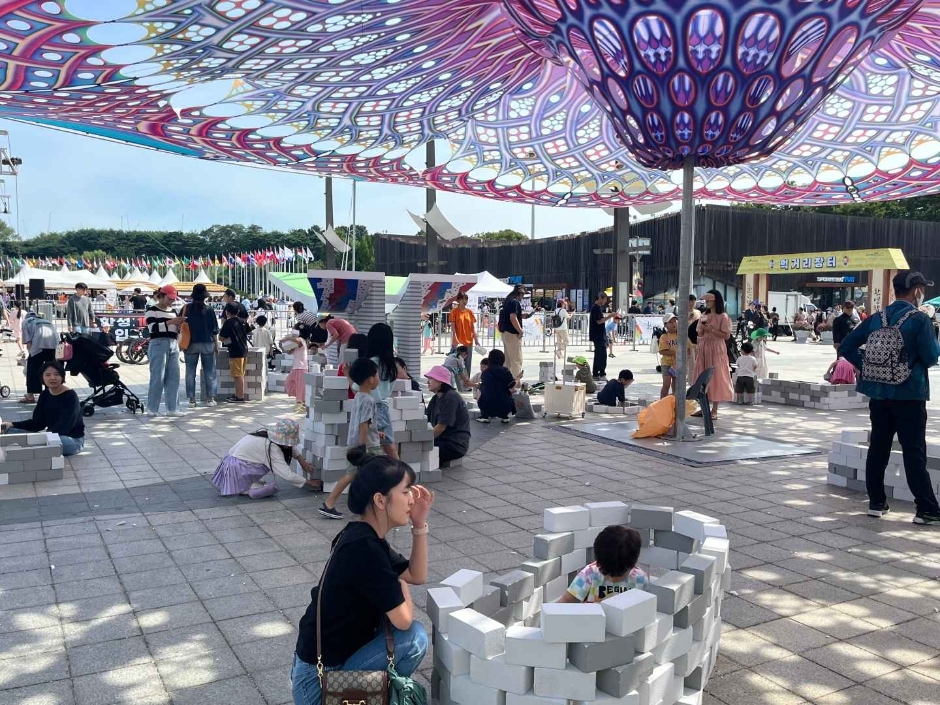
![Tumbas Reales Heolleung e Illeung en Seúl (서울 헌릉과 인릉) [Patrimonio Cultural de la Humanidad de la Unesco]](http://tong.visitkorea.or.kr/cms/resource/42/1985242_image2_1.jpg)
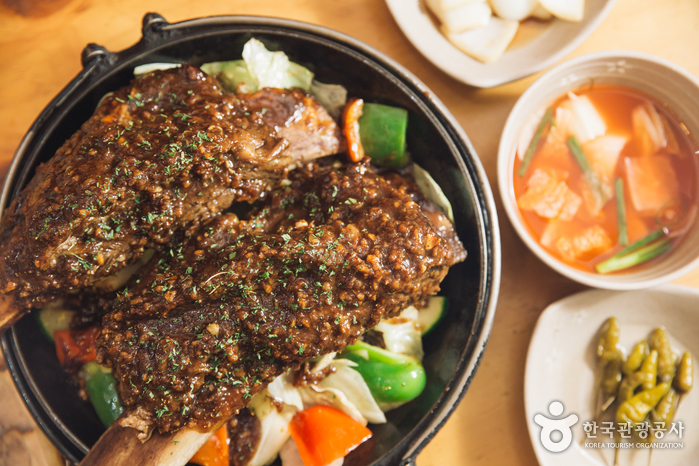
 Español
Español
 한국어
한국어 English
English 日本語
日本語 中文(简体)
中文(简体) Deutsch
Deutsch Français
Français Русский
Русский